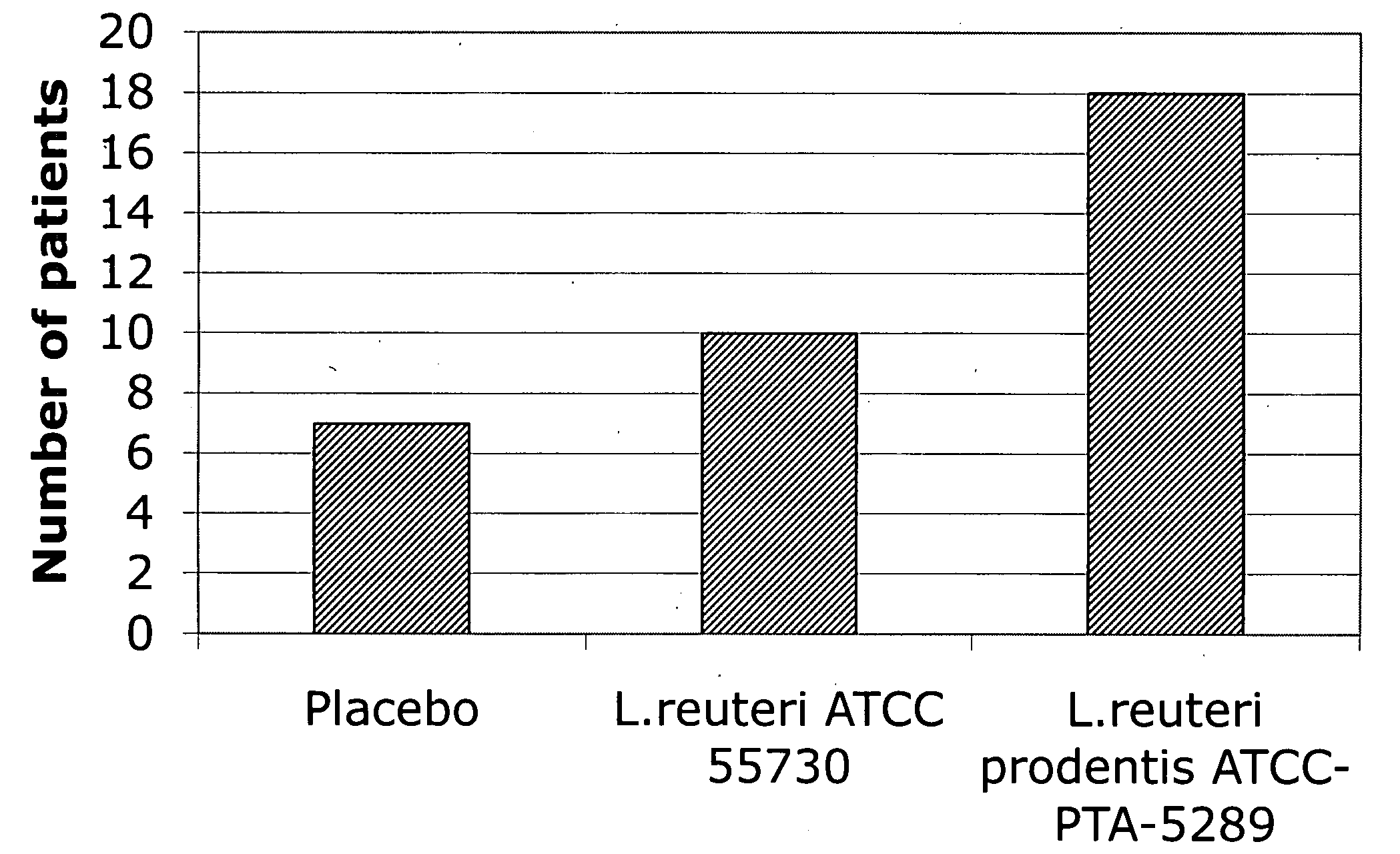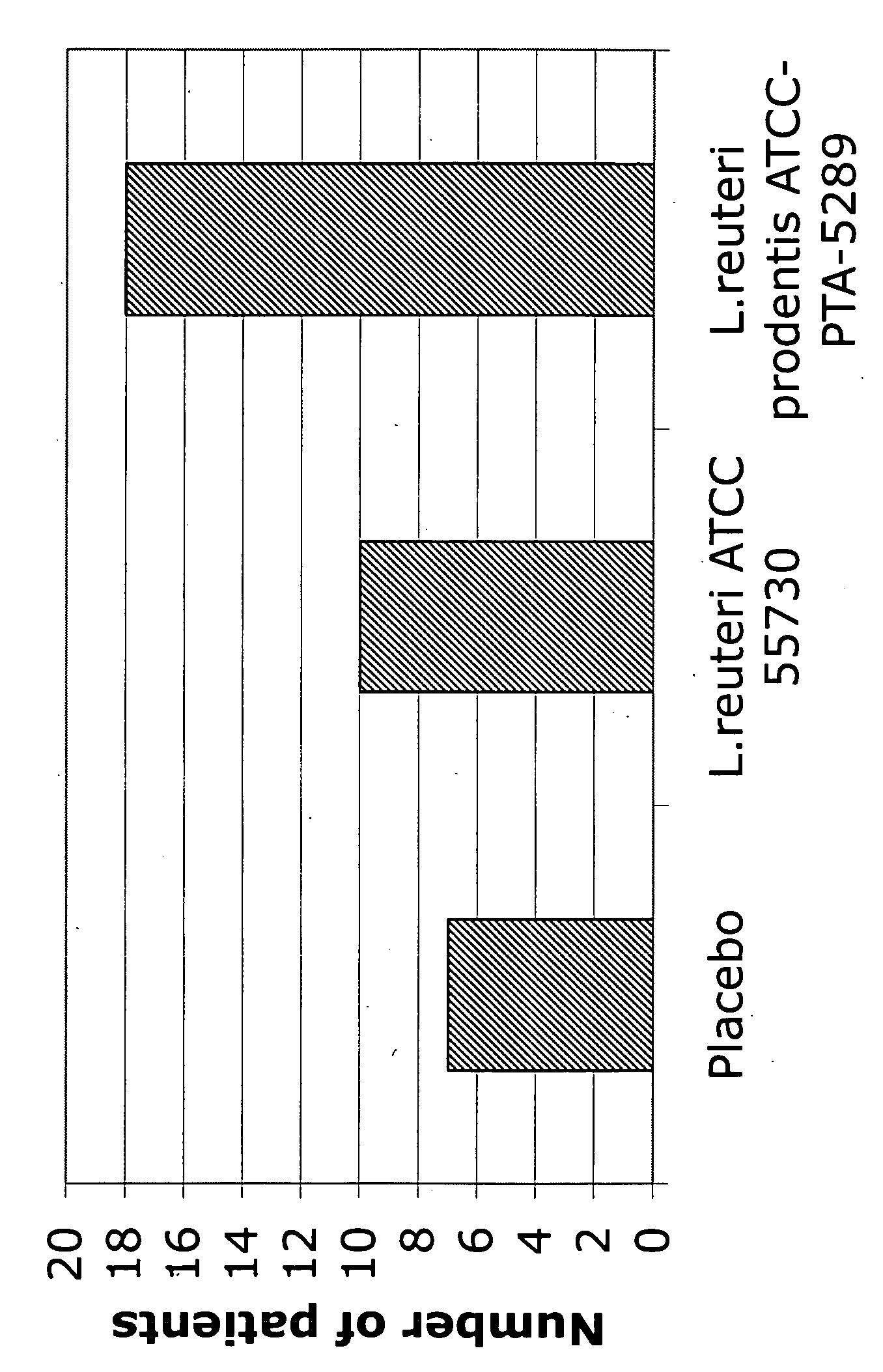Use of lactic acid bacteria for decreasing gum bleeding and reducing oral inflammation
a technology of lactic acid bacteria and gum bleeding, which is applied in the field of nonpathogenic, antiinflammatory and antibleeding lactic acid bacteria strains, can solve the problems of increasing the risk of gingivitis, tooth decay, and irritating the gums, and achieves antibacterial activity, good adhesion, and binding characteristics
- Summary
- Abstract
- Description
- Claims
- Application Information
AI Technical Summary
Benefits of technology
Problems solved by technology
Method used
Image
Examples
example 1
Method of Selection of Strains
[0041]The selection of the lactic acid bacteria strains to be used according to this invention can be done in the following four step manner:
[0042]a) Evaluation of Inhibiting Effect of Porphyromonas gingivalis by Cells of Lactic Acid Bacteria Strains
[0043]An example of a strain to use to measure the inhibitory effect is Porphyromonas gingivalis, ATCC33277 (available from The American Type Culture Collection, Manassas, Va., USA). The isolate is grown in trypticase soy broth (Difco, Detroit, USA) supplemented with 0.5% yeast extract (Difco) (TSBY). The cells are harvested during the exponential growth phase by centrifugation at 1000×g, washed twice with PBS and resuspended in the same buffer. The cell suspensions are subjected to a low-intensity ultrasonic device to disperse bacterial aggregates.
[0044]The test lactic acid bacteria strain is grown in MRS broth (Difco), and harvested during the exponential growth phase by centrifugation at 1000×g, washed tw...
example 2
Manufacturing of Chewing Gum Products Containing Selected Strain
[0061]In this example, L. reuteri FJ1 “Prodentis” (ATCC PTA-5289), is selected based on good growth characteristics in general and favorable results in the earlier mentioned selection in Example 1 in order to add the strain to a chewing gum. The L. reuteri protectis strain is grown and lyophilized, using standard methods for growing Lactobacillus in the industry.
[0062]The steps of an example of a manufacturing process of chewing gum containing the selected strain follow, with it being understood that excipients, fillers, flavors, encapsulators, lubricants, anticaking agents, sweeteners and other components of chewing gum products as are known in the art, may be used without affecting the efficacy of the product:
1 Melting. Melt Softisan 154 (SASOL GMBH, Bad Homburg, Germany) in a vessel and heat it to 70° C. to assure complete disruption of the crystalline structure. Then cool it down to 52-55° C. (just above its hardeni...
PUM
| Property | Measurement | Unit |
|---|---|---|
| total volume | aaaaa | aaaaa |
| pH | aaaaa | aaaaa |
| pH | aaaaa | aaaaa |
Abstract
Description
Claims
Application Information
 Login to View More
Login to View More - R&D
- Intellectual Property
- Life Sciences
- Materials
- Tech Scout
- Unparalleled Data Quality
- Higher Quality Content
- 60% Fewer Hallucinations
Browse by: Latest US Patents, China's latest patents, Technical Efficacy Thesaurus, Application Domain, Technology Topic, Popular Technical Reports.
© 2025 PatSnap. All rights reserved.Legal|Privacy policy|Modern Slavery Act Transparency Statement|Sitemap|About US| Contact US: help@patsnap.com



